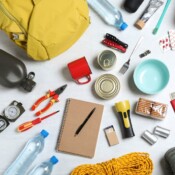
In any emergency, the right first aid kit can make a crucial difference. Whether facing a natural disaster, an outdoor adventure gone awry, or a road incident, specific emergencies require specific supplies. This blog focuses on creating the best survival first aid kit for various emergency situations. We’ll guide you through assembling an emergency kit tailored for different scenarios, ensuring you’re prepared for anything.
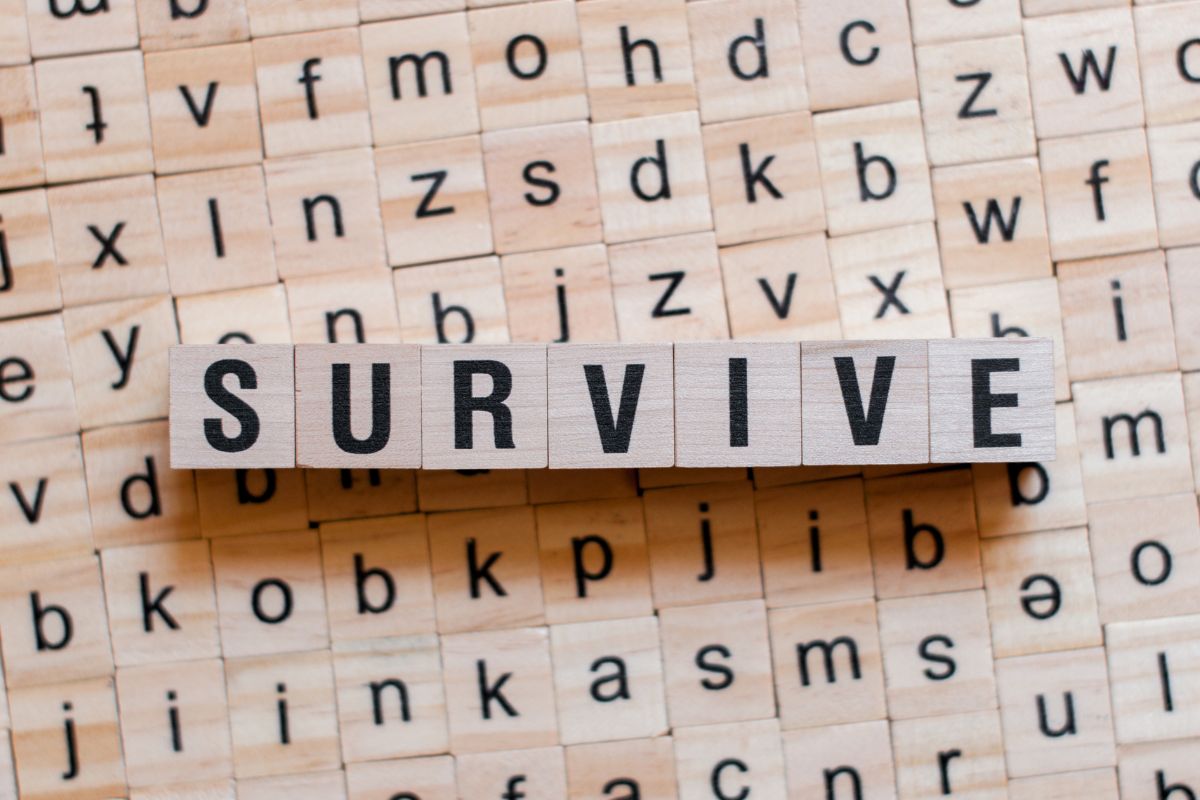
Having a well-stocked first aid kit is a fundamental aspect of being prepared for any situation. Whether it’s for everyday bumps and bruises or more severe emergencies, a survival first aid kit is an essential tool in every household and vehicle. Here’s a breakdown of the basic components that the best first aid kits should include, along with tips on customizing your kit based on your family’s or your personal medical history.
Essential Items for Every Survival First Aid Kit
A comprehensive first aid kit should be equipped to handle most common needs and minor injuries. A well-stocked first-aid kit must include the following medical supplies:
- Bandages: Various sizes for different types of wounds.
- Sterile Gauze Pads: To cover and protect wounds from infection.
- Adhesive Tape: Use medical tape for securing bandages and dressings.
- Antiseptic Wipes and Antibacterial Ointment: Use individually wrapped moist towelettes and ointment packets to clean wounds and prevent infection.
- Pain Relievers: Such as aspirin, ibuprofen, or acetaminophen.
- CPR Mask: For safe mouth-to-mouth resuscitation.
- Disposable Gloves: To prevent contamination.
- Scissors and Tweezers: For cutting tape, clothing, or removing splinters.
- Thermometer: To check for fever.
- Cold Packs: Use instant ice packs for reducing swelling and soothing injuries.
- Sunscreen and Lip Balm: To protect against sunburn.
- Tweezers: For removing splinters or ticks.
- Moleskin or Blister Pads: Essential for treating and preventing blisters.
- Emergency Blanket: Emergency blankets are compact and useful for various situations.
Customizing Your Kit
Customizing your first aid kit is key, especially if there are specific medical conditions within your family. Consider adding:
- Prescription Medications: Always have a supply of any necessary prescription drugs.
- Allergy Medications: Including antihistamines and epinephrine auto-injectors, if prescribed.
- Asthma Inhalers: If there’s a family member with asthma.
- Glucose Monitoring Supplies: For family members with diabetes.
- Specialized Pediatric Supplies: For families with young children.
Outdoor Survival First Aid Kit
Embarking on outdoor adventures like hiking, camping, wilderness trips or general outdoor use requires more than just a spirit of adventure. It demands preparedness, especially when it comes to first aid. The best survival first aid kit for outdoor adventures is one that’s tailored to meet the unique challenges of the great outdoors. Whether you’re planning a day hike or a longer expedition, having the right medical supplies can make a significant difference in the event of an emergency.
- Assess Your Environment: Understand the specific risks associated with your destination. Remote areas might require additional items like a signal mirror or an emergency whistle.
- Pack for the Duration: The contents of your kit might vary depending on whether you’re out for a day hike or on long trips.
- Lightweight but Comprehensive: Opt for compact, multi-use items. Your kit should be easy to carry without compromising on essential medical supplies.
Additional Supplies For Outdoor Survival
Encounters with wildlife and unfamiliar flora can lead to bites, scratches, or allergic reactions. To be prepared for any backwoods first aid emergency, include these things in your outdoor first aid kit:
- Insect repellent: To prevent bug bites.
- Anti-itch cream or hydrocortisone cream: Important if you’ll be in areas with poisonous plants.
- Snake Bite Kit: For use if you’re in an area with poisonous snakes.
- Burn Gel or Cream: For treating burns.
- Eye Wash Solution: In case of eye contamination.
- Emergency Whistle: To signal for help.
- First Aid Manual: A comprehensive guide on how to handle various emergencies.
- Allergy Medication: Such as antihistamines for allergic reactions.
- Water Purification Tablets: In case you need to purify drinking water.
- Tourniquet: For controlling major bleeding (only to be used when trained).
- Needle and Thread: For repairing gear and, in extreme cases, suturing wounds (only when trained).
- Rope: A rope might be essential for wilderness survival in some areas.
- Matches: Matches in waterproof packaging might come in very handy, depending on the season, location and situations.
- Flashlight: A lightweight flashlight with batteries.
Assemble and tailor the best survival first aid kit for your outdoor adventures thoughtfully to meet your specific needs. Preparation becomes your best ally outdoors, equipping you with the right supplies for anything from a minor scrape to a more serious injury.
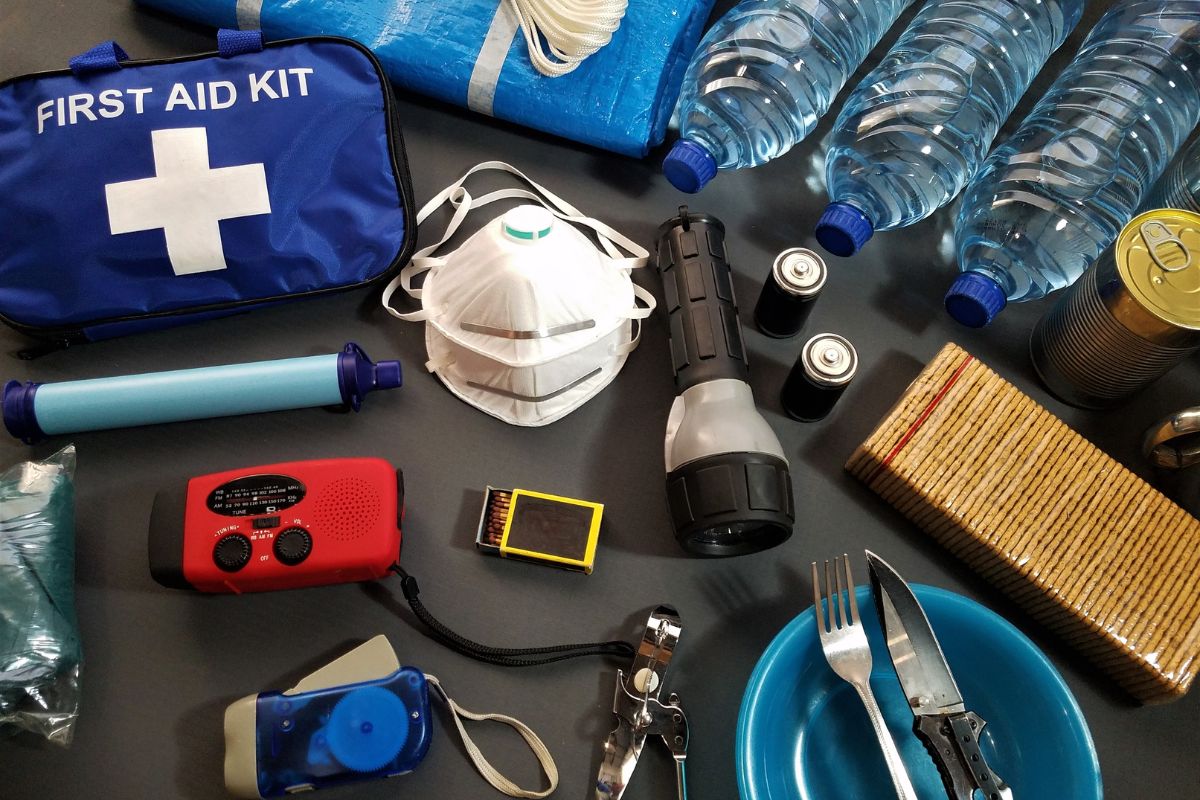
Road Trip Survival First Aid Kit
To equip yourself for survival in case your car gets stranded in an ice storm or is in an accident, add the following supplies to your kit:
- Thermal Blanket: Nights can get chilly.
- Flashlight with Extra Batteries: For the darker moments.
- Tweezers: You’ll thank me when you get a splinter.
- Scissors: Always handy.
- Seat Belt Cutter and Window Breaker: These can be life-saving in entrapment situations.
- Whistle: For attracting attention if you’re stranded.
- Burn Gel: Hot engine parts or radiators can cause burns.
- Reflective Triangles or Flares: To warn other drivers and prevent further accidents.
Remember, on road trips, it’s not just about reaching the destination. It’s about enjoying the journey, safely. With these essentials, you’re all set to tackle minor emergencies head-on. Don’t forget to check expiry dates before you head out! For a lot more good ideas, see this Road Trip Emergency Car Survival Kit Checklist.
More Emergency Kit Ideas
- Zombie Survival Kit: Make a fun zombie survival kit so you can prepare for the zombie apocalypse.
- Road Trip Survival Kit: From important emergency supplies to the things that are just good to have, this is a comprehensive car emergency kit.
Survival First Aid Kits For Children
When it comes to first aid, kids need a bit more attention. That’s why adjusting your first aid kit to cater to children’s needs is crucial. Kids aren’t just mini-adults; their medical needs can be quite different. So, let’s ensure your kit is up to the task for these survival emergency solutions.
Kid-Friendly Supplies
- Pediatric Medications: The most important part of a kid’s first aid kit. Stock up on child-specific pain relievers and allergy medicines.
- Smaller Bandages: Their tiny cuts need tiny bandages.
- Gentle Antiseptics: Look for skin-friendly options to avoid irritation.
- Fun Distractions: Small toys or books can be a good thing to distract them during stressful situations.
- Garbage Bags or Ziplocs and Safety Pins: They’re versatile. Think impromptu ponchos or quick fixes for broken straps.
- Saline Solution: Great for cleaning wounds or washing out eyes.
The goal? To have the best survival first aid kit that’s not just medically efficient but also kid-friendly. Regularly check and update the contents. And remember, the best way to use a first aid kit effectively is to know how to use it – consider a pediatric first aid course. Stay safe and prepared!
Natural Disaster Survival Kit Supplies
When nature unleashes its fury through natural disasters, being prepared can make all the difference. Tailoring your survival kit for calamities like earthquakes, floods, and hurricanes is not just smart; it’s essential. Different disasters bring different challenges, and your kit should reflect that.
Earthquakes jolt without warning, leaving behind a trail of destruction. Your kit should include duct tape for quick fixes and securing broken items. Plastic sheeting can be a lifesaver for makeshift shelters or patching up broken windows. And, of course, include tools for turning off utilities.
Floods bring unique challenges. Waterproof everything, especially important documents. Add floatation devices and maybe even a small, inflatable raft if you’re in a flood-prone area. High-energy snacks and enough food for a few days are essential, as floods can disrupt supply chains.
For hurricanes, your kit should be comprehensive. Long-lasting food, plenty of water, and emergency shelter materials are crucial. With power likely out, consider a hand-crank or solar-powered charger for your devices.
Quick Response Items for Sudden Natural Disasters
In the immediate aftermath of a disaster, your response time is critical. Include items in your kit for quick access and immediate use:
- Severe Injuries: For handling severe wounds, your kit should include more than just basic bandages. Think tourniquets, large sterile dressings, and splints.
- Medical Care: While waiting for professional medical care, items like pain relievers, antiseptics, and antibiotics can be vital.
- Emergency Preparedness: Items like a pocket knife, multi-tool, or a sturdy pair of gloves can be an invaluable resource.
- Larger Kits: If you’re preparing for a family, especially with small children, your kit will need to be more extensive. Include child-specific medications, comfort items, and games or activities.
Your first-aid needs during a natural disaster go beyond physical injuries. Mental health is just as important. Include items that can help reduce stress or anxiety, such as books, music, or familiar comfort items.
Remember, a well-prepared survival kit is not static. It evolves with your understanding of emergency preparedness and the specific risks associated with your area. Regularly update your kit, check the expiry dates on medicines and food, and reassess your needs annually.
In conclusion, while we can’t predict when or where the next disaster will strike, we can certainly prepare. Your survival kit is your first line of defense against the unpredictable nature of natural disasters. Tailor it to your environment, keep it accessible, and most importantly, stay informed about the best practices in emergency preparedness. Stay safe!
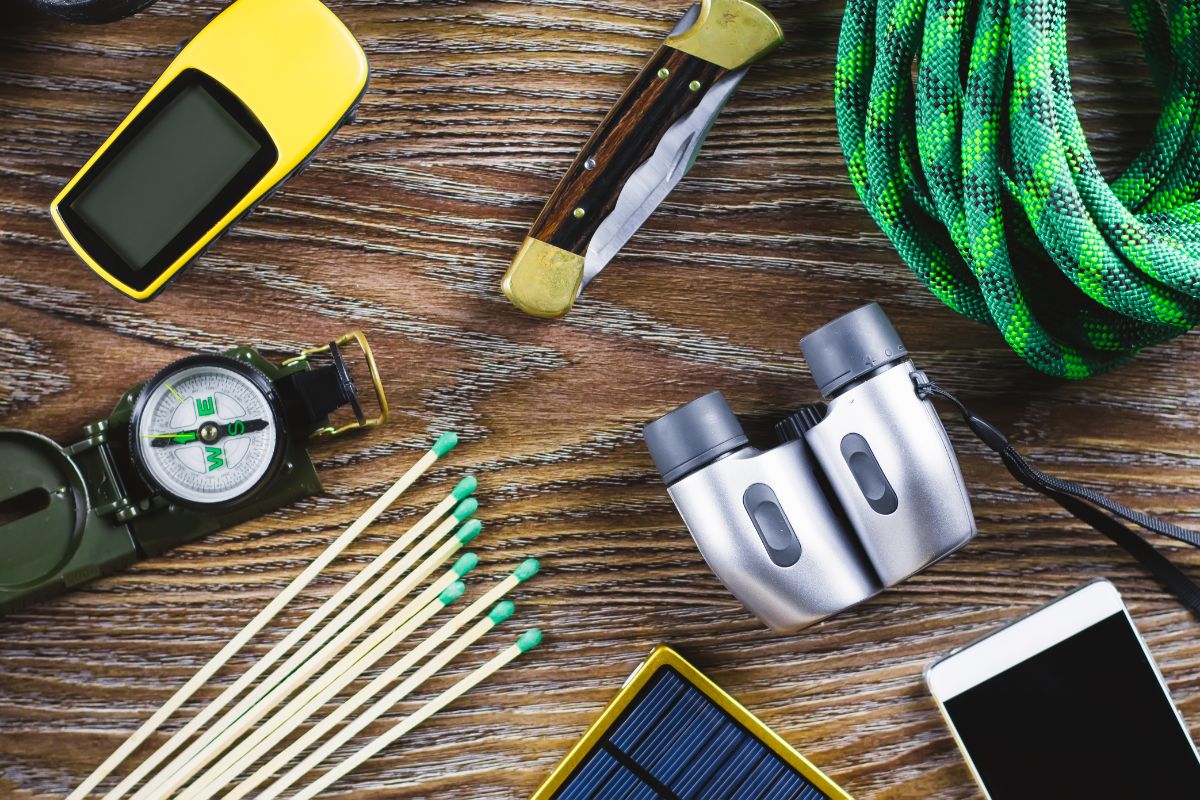
First Aid Training: Beyond the Kit
Imagine you’re camping with friends and someone gets injured. You have a new first aid kit packed with all the necessary items. But then it hits you – do you know how to use them effectively? This realization highlights the importance of first aid training. Trust me, being prepared is always a good idea.
The Importance of First Aid Training in Emergency Situations:
Having a comprehensive kit is crucial, but knowing what to do with it is key. In emergency scenarios, the right skills can mean the difference between panic and effective treatment. First aid training equips you with knowledge on how to assess the situation, provide immediate care, and when to seek medical help.
For instance, learning CPR (cardiopulmonary resuscitation) is vital. It’s one thing to have a manual in your kit; it’s another to perform CPR confidently while help arrives. Proper training provides hands-on practice under the guidance of medical professionals.
Basic First Aid Skills Everyone Should Know
There are a few key skills that can significantly impact emergency outcomes. Let’s explore them:
- Wound Care: Understanding how to clean and dress minor wounds is fundamental. It’s not just about slapping on a bandage but knowing how to stop bleeding and prevent infection.
- CPR & AED Use: This could literally be a lifesaver. With proper training, you’ll learn the correct technique and rhythm.
- Choking Assistance: Heimlich maneuver – a crucial skill, especially in group settings.
- Shock Management: Recognizing and managing shock can stabilize the injured until medical help arrives.
- Fracture and Sprain Care: Knowing how to immobilize a limb can prevent further injury.
First Aid Training for Different Scenarios:
Depending on your lifestyle and group size, your training needs might differ. A solo hiker’s requirements will vary from those of a family with small children. Tailor your learning to these needs. For instance, parents might benefit from pediatric first aid courses.
Keep Your Skills Updated:
First aid techniques and recommendations evolve. Regular refresher courses are a good idea to stay current. Also, keeping personal health information handy in your kit can be invaluable in emergencies involving known medical conditions.
Creating a Culture of Safety:
Encouraging others to get trained creates a safer community. Whether it’s at home, in the workplace, or among friends, sharing knowledge elevates everyone’s ability to respond effectively in emergencies.
First Aid Training as a Continuous Journey:
Look at first aid training as an ongoing journey rather than a one-time course. As your life circumstances change, so should your emergency response skills. And remember, while having a comprehensive kit is essential, the knowledge and confidence to use it effectively is what truly makes a difference in emergency situations.
First Aid Training: Your Lifeline in Emergencies
To sum up, while stocking a new first aid kit is a great first step, gaining the skills to use those included items effectively is crucial. First aid training isn’t just about handling minor wounds; it’s about being equipped to make the right decisions in critical moments. It’s about turning helplessness into effective action. So, find a good place to get trained, and take that step towards becoming a more capable, confident, and prepared version of yourself. Stay safe!
Check out the Red Cross to get certified first aid training.
Regular Maintenance of Your First Aid Kit
- Check expiration dates of all items regularly.
- Replace any used or outdated supplies immediately.
- Reassess your kit’s contents based on changing medical needs or life situations.
A survival first aid kit is more than just a collection of items; it’s a crucial part of your safety plan. Whether it’s a small bandage for a minor cut or a CPR mask for a life-saving procedure, each component plays a vital role. Remember, in emergencies, having the right supplies at hand is just as important as knowing how to use them. So, be smart, get prepared, and ensure your first aid kit is always ready for whatever life throws your way.
Be Prepared
So, you’ve decided to make your best survival first aid kit. Smart move! Let’s do a quick recap of why this is such an important item in your preparedness arsenal. Whether you’re an avid hiker, a weekend camper, or just like being prepared, a custom first aid kit is essential.
Why Customized First Aid Kits Matter:
- Specific Activities: Tailor your kit to the activities you love to ensure preparedness for their unique risks.
- Adaptability: Adapt your kit to meet your personal medical needs or those of your travel companions for invaluable preparedness.
- Efficiency: In a medical emergency, knowing exactly what’s in your kit and how to use it can save precious time.
Now, just making your kit isn’t the end of the road. Regular maintenance is key.
Maintaining Your Kit:
- Check Expiration Dates: Medicines and sterile items have an expiration date. Keep them current.
- Replenish Used Items: Used up some bandages or antiseptic wipes on your last outing? Restock immediately.
- Seasonal Adjustments: Adapt your kit to the season. For winter, add items like hand warmers or a thermal blanket.
Remember, the best survival first aid kit is the one that’s tailored to you and your adventures. It’s not just about having a bunch of supplies; it’s about having the right supplies. And, it’s about knowing what’s in there and how to use it.
Encouraging Kit Updates and Maintenance:
- Make It a Habit: Every few months, take a few minutes to go through your kit.
- Educate Yourself: Familiarize yourself with each item – how and when to use it.
- Involve Your Family: If you’ve got a family, involve them in the process. It’s a great way to teach them about safety and preparedness.
So, there you have it. Creating your custom first aid kit is a proactive step towards safety and preparedness. Remember, the best time to prepare for a medical emergency isn’t during the emergency itself – it’s long before it happens. Stay safe and be prepared!
Overlooking Personal Medications and Allergies: Neglecting to include prescription medications or items for specific allergies can be a critical oversight. It’s important to tailor the kit to include any necessary personal medication.
Ignoring Skill Level: Including complex items that you don’t know how to use can be more harmful than helpful. It’s crucial to understand how to effectively use every item in your kit.
Forgetting to Check Expiration Dates: Medical supplies and medications have expiration dates. Using expired items can be ineffective or dangerous.
Lack of Variety in Bandage Sizes: Only having one size of bandage limits the types of injuries you can effectively treat. A good first aid kit contains a variety of sizes.
Not Planning for Specific Environments: The contents of your kit should reflect the environment you’ll be in. For example, if you’re going to a snake-prone area, snake bite supplies are essential.
Overpacking: While it’s important to be prepared, overpacking can make the kit bulky and hard to carry. Prioritize essentials and know the limits of what you can realistically carry.
Neglecting Weather-Specific Items: Not including items for weather-related issues, like sunburn or hypothermia, can leave you unprepared for common environmental challenges.
Forgetting to Regularly Update and Maintain the Kit: A first aid kit should be a living resource that’s regularly checked and updated. This ensures that you have what you need, and everything is in working order.
Not Including Multi-Use Items: Space is at a premium in a survival kit. Items that serve multiple purposes, like duct tape or safety pins, are valuable additions.
Lacking Knowledge of Basic First Aid: Owning a first aid kit isn’t a substitute for first aid knowledge. Basic training on how to handle common emergencies is crucial.
Educating yourself on effectively using the items in your survival first aid kit is crucial for being prepared in emergencies. Here are several ways to enhance your knowledge and skills:
Take a First Aid Course: Enroll in a certified first aid course offered by organizations like the American Red Cross, St. John Ambulance, the American Heart Association, or local community centers. These courses provide hands-on training for dealing with common injuries and medical emergencies.
Online Tutorials and Videos: There are numerous online resources, including videos and tutorials, which can teach you how to use specific items in your first aid kit. Websites like YouTube have instructional videos for almost every aspect of first aid.
Read First Aid Manuals: Invest in a comprehensive first aid manual and read it thoroughly. Keep it with your first aid kit for quick reference in an emergency.
Practice Regularly: Regularly practice the skills you learn. This could be as simple as bandaging a wound or performing CPR on a mannequin. Regular practice helps retain these vital skills.
Attend Workshops and Seminars: Keep an eye out for workshops or seminars in your community. These events often focus on specific aspects of first aid and can be a great way to keep your skills updated.
Download First Aid Apps: There are several first aid and CPR apps available for smartphones. These apps provide step-by-step instructions and are a handy resource to have at your fingertips.
Consult Healthcare Professionals: If you have the opportunity, speaking with healthcare professionals like nurses, paramedics, or doctors can provide valuable insights into effectively using first aid kit items.
Join Community Groups: Joining community groups or forums, especially those focused on outdoor activities, survival skills, or health, can be a great way to learn from others’ experiences and knowledge.
Refresh Your Knowledge: First aid practices and guidelines can change. Regularly updating your knowledge ensures you stay in line with the latest best practices.
Simulate Scenarios: Create simulated emergency scenarios to practice using your kit. This could involve family or friends and can range from treating minor cuts to more serious situations like fractures or sprains.
Remember, the goal of learning first aid is not just to use the items in your kit effectively but also to remain calm and composed during emergencies. Regular education and practice are key to achieving this.
Routine Checks: Ideally, inspect your survival first aid kit at least every six months. Regular checks help to identify and replace used or expired items.
After Each Use: Always review your kit after it has been used. This ensures that any items you’ve used are replaced immediately, keeping the kit fully stocked for the next emergency.
Expiration Dates: Pay close attention to the expiration dates on medical supplies like medications, antiseptic wipes, and ointments. Expired items should be replaced promptly as their effectiveness can diminish over time.
Seasonal Changes: If you live in an area with distinct seasons, it’s a good idea to adjust the contents of your kit accordingly. For example, in winter, you might add items like hand warmers or a thermal blanket.
Personal and Family Needs: If there are changes in your personal or family health needs, update your kit to reflect these. For instance, if someone develops an allergy, add the appropriate antihistamines.
Technological and Medical Advances: Occasionally, new products or improved versions of existing items become available. Keeping abreast of these changes can help you upgrade your kit with more effective or more compact items.
Post-Training Updates: If you complete a first aid course or receive new information, revisit your kit to see if there are any items you should add based on your enhanced knowledge.
Environment or Activity Changes: If you’re planning a specific trip or adventure, tailor your kit to suit the specific environment or activity. For example, if you’re going on a hiking trip, include items suitable for treating blisters and sprains.
Consistent maintenance ensures your survival first aid kit is always prepared for emergencies, whether at home or on an adventure.
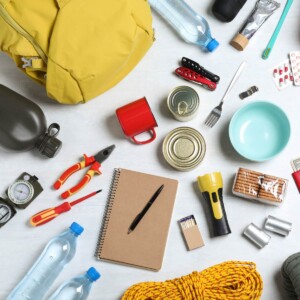
What To Put In A Survival First Aid Kit
Tools
- Backpack or First Aid Box
Supplies
- bandages various sizes
- sterile gauze pads
- adhesive tape
- antiseptic wipes or antibacterial ointment
- pain relievers
- CPR mask
- disposable gloves
- scissors and tweezers
- thermometer
- cold packs
- sunscreen and lip balm
- tweezers or scissors
- moleskin or blister pads
- emergency blanket
- prescription medications
- allergy medications
Outdoor Kit Ideas
- insect repellent
- anti-itch cream
- snake bite kit
- burn gel
- eye wash solution
- emergency whistle
- water purification tablets
- tourniquet
- needle and thread
Road Trip Ideas
- flashlight
- seat belt cutter
- reflective triangles or flares
- scissors
- duct tape
Optional
- garbage bags
- plastic sheeting
- ropes
- matches
- water purification tablets
- towel
Instructions
- Customize your first aid kit to your needs. Place all items in a container or bag that's easy to transport.
Notes
Love This Project?
Make sure to share it with me on Instagram @andreasnotebook and follow on Pinterest @andreasnotebook for more!

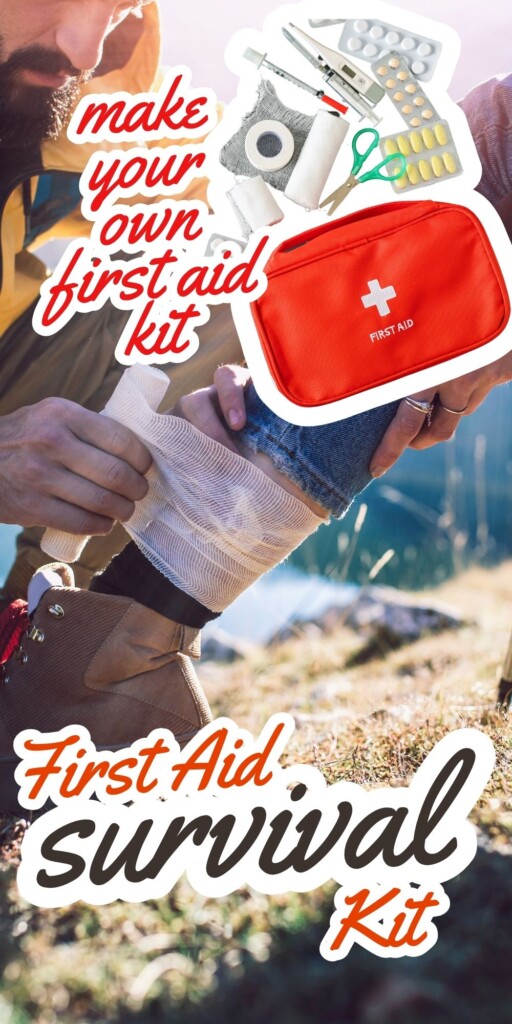
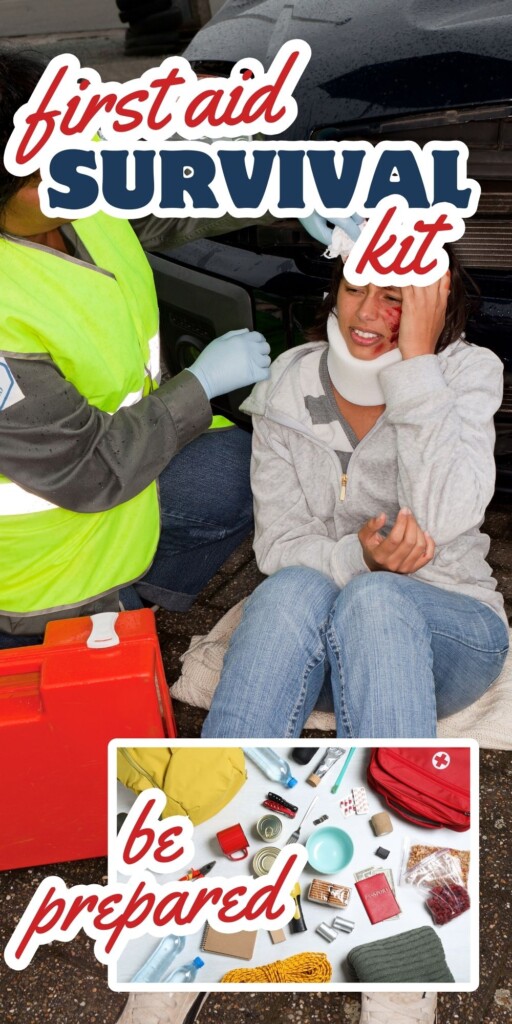
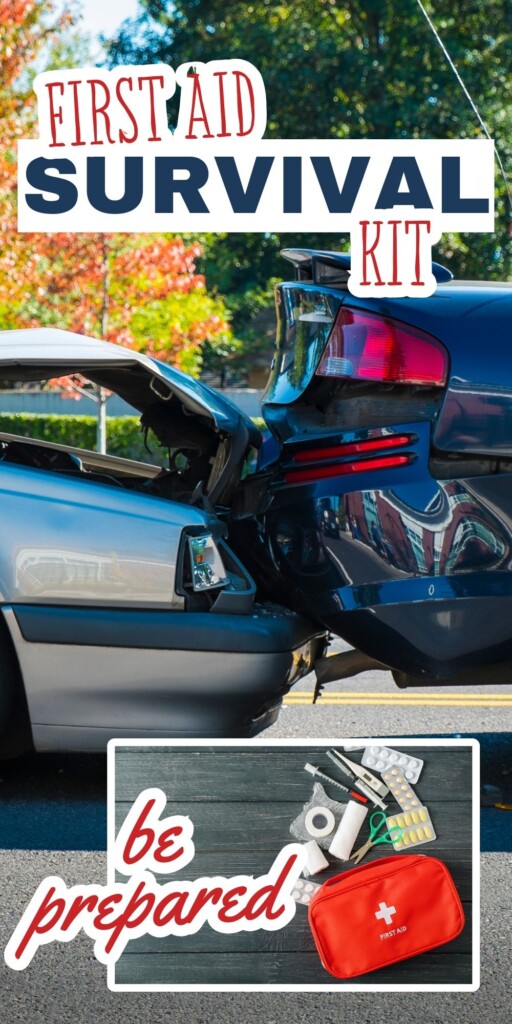

Comments & Reviews
Jolie says
Thank you. I have been putting off making a survival kit. Adding this to it.
Felicia says
Do we not do tourniquets anymore? Or slings?